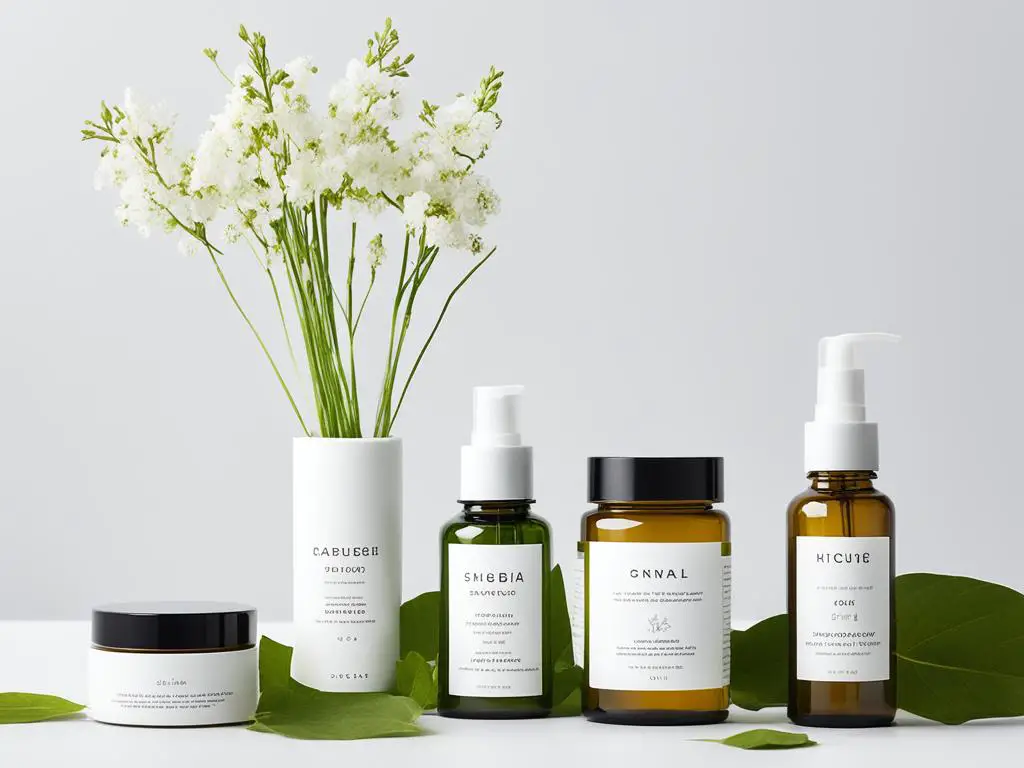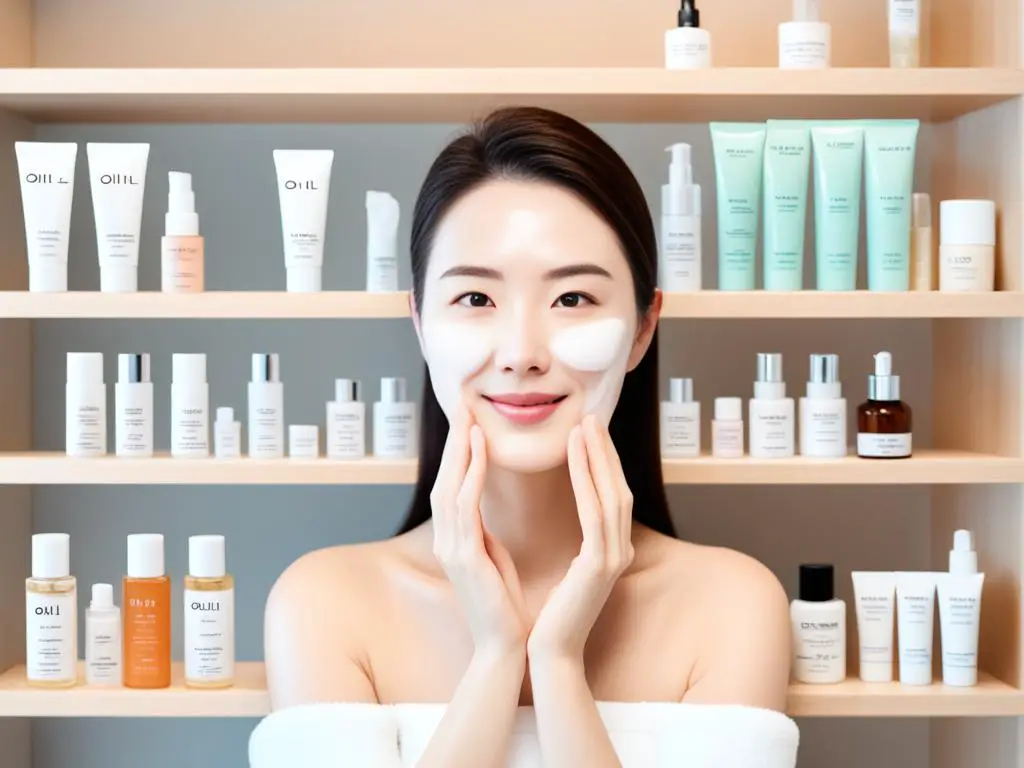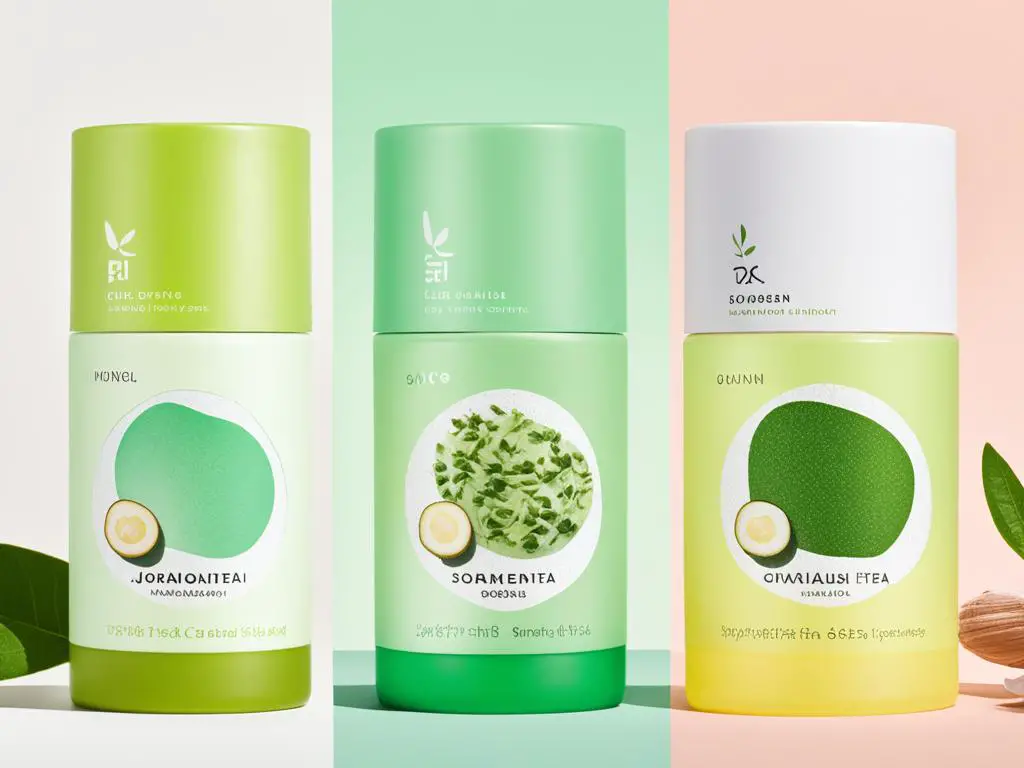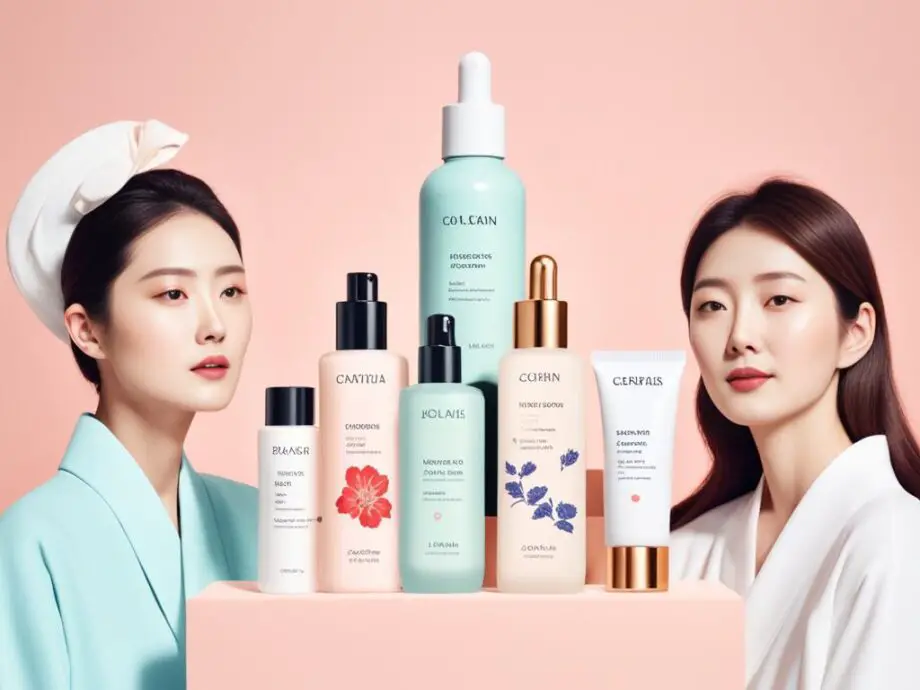In the world of skincare, Japanese and Korean beauty routines have gained immense popularity. Their unique approaches and effective products have captivated beauty enthusiasts around the globe. In this article, we will explore the key differences between Japanese and Korean skin care, comparing their cultural influences, product formulations, skincare routines, and current trends.
Key Takeaways:
- Japanese and Korean skin care have different cultural influences and skincare philosophies.
- Product formulations in Japanese and Korean skin care vary, with a focus on natural ingredients and innovative technologies.
- The skincare routines in Japan and Korea differ in terms of steps, product application, and hydration focus.
- Both Japan and Korea have unique skincare trends, with a variety of products and techniques to address specific concerns.
- Choosing between Japanese and Korean skin care depends on individual preferences and skincare needs.
Cultural Influences on Japanese and Korean Skin Care
Japanese and Korean skin care are deeply rooted in their respective cultures, drawing inspiration from historical beauty traditions and cultural values. These influences have shaped their skincare philosophies and set them apart from one another. Let’s explore how these cultural factors have made Japanese and Korean skin care unique.
Japanese Skin Care: Embracing Simplicity and Natural Ingredients
Japanese beauty traditions are heavily influenced by the country’s rich history and Zen philosophy. One of the key principles of Japanese skin care is simplicity. The focus is on using minimal products and ingredients to achieve and maintain healthy skin.
Japanese skin care emphasizes the use of natural and botanical ingredients, many of which have been passed down through generations. Traditional Japanese remedies often involve gentle and nourishing components like green tea, rice bran, and seaweed, known for their antioxidant and hydrating properties.
“Japanese skin care emphasizes simplicity, natural ingredients, and traditional remedies to achieve and maintain healthy skin.”
Korean Skin Care: A Multifaceted Approach with Traditional Rituals
In contrast, Korean skin care takes a more multifaceted approach, influenced by Korea’s rich cultural heritage and its pursuit of perfection. Traditional Korean beauty rituals play a significant role in shaping the skincare routines followed today.
Korean skin care involves a multi-step regimen, often referred to as the “K-beauty routine.” This approach emphasizes thorough cleansing, exfoliation, hydration, and sun protection. It incorporates innovative techniques and products that have gained immense popularity worldwide.
Comparing Cultural Influences
The table below highlights the cultural influences on Japanese and Korean skin care:
| Japanese Skin Care | Korean Skin Care |
|---|---|
| Emphasis on simplicity and minimalism | Multistep routines for thorough skincare |
| Use of natural and botanical ingredients | Innovative formulations and technologies |
| Focused on traditional remedies and rituals | Incorporation of modern beauty techniques |
| Driven by Zen philosophy and historical traditions | Inspired by the pursuit of perfection and cultural heritage |
It’s important to note that while both Japanese and Korean skin care have their distinct cultural influences, they share a common goal of promoting healthy, glowing skin. Understanding these cultural influences can help you choose a skincare routine that aligns with your preferences and addresses your specific needs.

Product Formulations in Japanese and Korean Skin Care
In Japanese and Korean skin care, product formulations play a crucial role in achieving radiant and healthy skin. Both countries have unique approaches and utilize specific ingredients to address various skin concerns. Let’s dive into the world of Japanese and Korean skin care products and explore the key differences between them.
1. Ingredients:
Japanese skincare products often feature natural and traditional ingredients known for their soothing and nourishing properties. You’ll commonly find ingredients like green tea extract, rice bran oil, and camellia oil in Japanese products. These natural extracts help to maintain a gentle and minimalistic approach to skincare.
Korean skincare, on the other hand, embraces a wide range of innovative and high-tech ingredients. This includes popular ingredients such as fermented extracts, snail mucin, and hyaluronic acid. The emphasis on science-driven formulations has led to the development of potent serums and essences that target specific skin concerns.
2. Traditional Remedies:
Both Japanese and Korean skincare draw inspiration from traditional remedies that have been passed down through generations. Japanese skincare often incorporates elements of ancient rituals, such as the use of rice powder and silk cocoon extracts to achieve a smooth, porcelain-like complexion.
Korean skincare, on the other hand, features traditional remedies like ginseng and honey, known for their revitalizing and anti-aging properties. These ingredients are often used in sheet masks and overnight sleeping packs to provide intensive hydration and nourishment.
3. Manufacturing Techniques:
The beauty industries in both Japan and Korea prioritize innovation and technological advancements in their manufacturing processes.
In Japan, traditional craftsmanship is highly valued, with many brands focusing on artisanal production methods. This attention to detail ensures product quality and consistency. Japanese skincare brands also incorporate cutting-edge technologies like microencapsulation to enhance the efficacy and absorption of active ingredients.
Korea, on the other hand, is known for its fast-paced beauty innovations. The country’s beauty industry is fueled by continuous research and development, resulting in advanced manufacturing techniques such as nanotechnology and bioconversion. These techniques enable the creation of lightweight and deeply hydrating formulas.
To enhance your understanding of the product formulations in Japanese and Korean skincare, here is a visual representation of the key differences:
| Japanese Skin Care Products | Korean Skin Care Products |
|---|---|
| Natural and traditional ingredients | Innovative and high-tech ingredients |
| Simplicity and minimalism | Multi-step routines |
| Artisanal manufacturing techniques | Technologically advanced production methods |
Understanding the different product formulations in Japanese and Korean skin care empowers you to select the most suitable products for your unique skincare needs. Whether you prefer the simplicity and natural ingredients of Japanese skincare or the multi-step routines and innovative technologies of Korean skincare, there is a world of beauty waiting for you to explore.
Skincare Routines: Japanese vs Korean Approach
In this section, we will compare the skincare routines followed in Japan and Korea. Both countries have gained significant recognition for their innovative approaches to skincare, but each takes a unique path towards achieving healthy and radiant skin. By understanding the differences in their skincare routines, you can determine which approach aligns best with your skincare goals.
Order of Product Application
One primary difference between Japanese and Korean skincare routines lies in the order of product application. Japanese skincare typically follows a minimalist approach, prioritizing simplicity and efficiency. A typical Japanese routine includes cleansing, toning, moisturizing, and sun protection. The emphasis is on using high-quality, effective products that cater to the specific needs of the skin.
Korean skincare, on the other hand, embraces a multi-step routine known as the “10-step skincare routine.” This comprehensive regimen emphasizes layering multiple products to address various skincare concerns. The steps include oil-based cleansing, water-based cleansing, exfoliating, toning, essence, serum, sheet masks, eye cream, moisturizer, and sun protection. The focus is on achieving well-hydrated and nourished skin.
Focus on Hydration
Both Japanese and Korean skincare routines emphasize hydration, but their approaches differ. Japanese skincare places importance on keeping the skin moisturized to maintain its natural barrier. Lightweight, hydrating toners and moisturizers are used to infuse the skin with moisture without feeling heavy or greasy.
Korean skincare, on the other hand, focuses on achieving deep hydration through the layering of serums, essences, and sheet masks. Hydrating ingredients like hyaluronic acid and botanical extracts are utilized to ensure the skin retains moisture and appears plump and supple.
Use of Multiple Layers
Japanese skincare routines typically involve using a few carefully selected products to deliver targeted results. The emphasis is on quality over quantity, with each product serving a distinct purpose. This approach allows for a streamlined routine that is suitable for those who prefer simplicity.
Korean skincare routines, on the other hand, rely on the layering of multiple products to address various skin concerns. This layering technique helps to deliver a potent combination of ingredients and creates a barrier that locks in hydration. It allows for customizability and personalization of the skincare routine according to individual skin needs.

Japanese skincare routines focus on simplicity and efficiency, while Korean skincare routines embrace a multi-step approach with an emphasis on hydration and layering. By understanding these differences, you can choose the routine that aligns best with your skincare goals and preferences.
Japanese and Korean Skin Care Trends
In today’s beauty landscape, Japanese and Korean skin care have emerged as major influencers and trendsetters. Let’s delve into the current skincare trends in Japan and Korea, highlighting the popular products, techniques, and innovations that are shaping the industry.
1. Embracing Natural Ingredients
Both Japanese and Korean beauty companies emphasize the use of natural ingredients in their skincare formulations. From traditional botanical extracts to nourishing oils, these natural elements play a vital role in achieving healthy, radiant skin. Embracing the power of natural ingredients has become a prominent trend in both countries, with brands continuously developing innovative products that harness the benefits of nature.
2. Multi-Step Skincare Routines
Korean skincare is notorious for its multi-step routines, which typically involve several products applied in a specific order. This trend has gained popularity worldwide, as more people recognize the importance of layering products to address various skincare concerns. On the other hand, Japanese skincare tends to focus on simplicity, with a streamlined approach that prioritizes quality over quantity. Regardless of the approach, the underlying concept of these routines is to provide thorough and comprehensive care for the skin.
3. Sheet Masks and Essences
Sheet masks and essences are two skincare trends that have taken the beauty world by storm. Korean beauty brands are known for their wide range of sheet masks, which are infused with potent serums to provide intense hydration and nourishment. Japanese skincare, on the other hand, emphasizes the use of lightweight essences, which are highly concentrated and easily absorbed by the skin. Both sheet masks and essences offer convenient and effective ways to pamper your skin.
4. Innovative Technologies
Japan and Korea are at the forefront of skincare technology, constantly pushing boundaries and introducing innovative concepts. From high-tech devices to advanced formulations, these countries are known for their cutting-edge approach to beauty. For example, Japan introduced the revolutionary concept of “wonder technology,” which combines modern science with traditional herbal medicine to create truly exceptional skincare products.
5. Acne Solutions and Beauty Tips
Both Japanese and Korean skincare provide unique solutions for acne-prone skin. Japan offers products that focus on gentle exfoliation and oil-balancing ingredients to help control breakouts. On the other hand, Korean skincare emphasizes the importance of hydration and using targeted treatments like spot patches and serums. Here are some beauty tips to keep in mind:
- Cleanse your skin thoroughly but gently, using a mild cleanser suitable for your skin type.
- Hydrate your skin with lightweight, non-comedogenic moisturizers.
- Avoid touching your face excessively to prevent the spread of bacteria.
- Choose skincare products with acne-fighting ingredients like salicylic acid, tea tree oil, or centella asiatica extract.
- Protect your skin from harmful UV rays by using a broad-spectrum sunscreen with at least SPF 30.
To summarize, Japanese and Korean skin care trends offer a wealth of options for those seeking to revamp their beauty regimens. From embracing natural ingredients to innovative technologies, these trends cater to a wide range of skincare needs. Whether you prefer the simplicity of Japanese skincare or the multi-step routines of Korean beauty, there’s something for everyone to achieve healthy, glowing skin.

Conclusion
In conclusion, the comparison between Japanese and Korean skincare has revealed distinct approaches to achieving healthy and radiant skin. Japanese skincare emphasizes simplicity, natural ingredients, and traditional rituals, while Korean skincare embraces a multi-step routine and innovative formulations.
To determine which approach is best for you, consider your individual skincare needs and preferences. If you prefer a minimalistic routine and value the use of natural ingredients, Japanese skincare may be the ideal choice. On the other hand, if you enjoy a more elaborate routine and want to explore cutting-edge formulations, Korean skincare may be more suitable.
By understanding the differences outlined in this article, you can make an informed decision and tailor your beauty regimen accordingly. Whether you choose Japanese or Korean skincare, remember that consistency and proper skincare habits are key to achieving and maintaining healthy skin.
